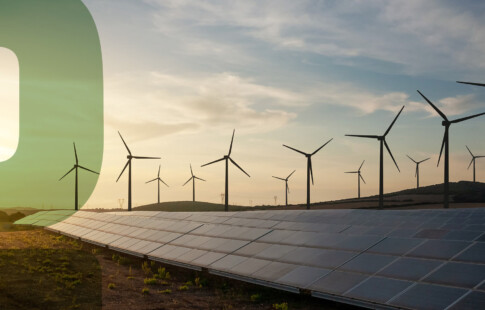
Cost Advantages of Rooftop Solar Panels vs. Grid Electricity
We are reader-supported. When you buy through links on our site, we may earn affiliate commission.
Installing solar panels on your roof can significantly reduce your environmental impact and give you more control over the energy you use. The environmental benefits of solar power are clear, but how does it stack up regarding cost? Let’s take a look at three cost advantages of installing rooftop solar panels vs. grid electricity use.
1. Upfront Costs of Rooftop Solar Panels vs. Grid Electricity
Installation costs are the most expensive part of going solar. On average, it costs about $22,000 to install a system on your home. The range of prices varies widely though from as little as $2000 to as much as $40,000. Of course, a significant factor is how many solar panels you need.
Another large part of the equation is the type of panel you choose to install. Some technologies are more expensive than other, but as these things usually go, you get what you pay for. Your options include:
- Thin-Film Panels: These typically cost from $0.70 to $1 per watt. They have an efficiency of seven to 14 percent, require 100 to 215 square feet and last for 14 to 17 years.
- Polycrystalline Panels: These panels sell for between $0.90 and $1 per watt. They have an efficiency of 15 to 20 percent, require 85 to 100 square feet and last for 23 to 27 years.
- Monocrystalline Panels: Monocrystalline panels sell for between $1 and $1.50 per watt. They have an efficiency of 17 to 24 percent, require 65 to 100 square feet and last for 25 to 35 years.
While monocrystalline panels cost the most, they last the longest and are more efficient, so they’ll generate more electricity from the same amount of sunlight compared to the other technologies.
Also, solar panels that can rotate to follow the sun are more efficient than those that stay in a fixed position, although this technology is more common on large solar farms operated by utility companies. There are other solar technologies, too, such as concentrated solar energy and solar thermal energy, but they’re not typically used for residential installations.
2. Financial Incentives
When deciding between rooftop solar panels vs. grid electricity, consider where you live. You may be eligible for programs aimed at reducing the costs of installing solar and making it accessible to more people. You could even have a solar array installed for $0 down.
The federal government offers some financial incentives, as do many state and local governments. Depending where you live, you could get an exemption from property or sales taxes, a tax credit, a rebate or another incentive. You might even get help from the federal, state and local governments.
The policies in your state matter, too. Some have a rule called net metering, for instance, which allows you to sell any excess energy you generate back into the grid.
Some energy companies also offer rebates and leasing programs that can reduce your initial and overall costs. Be on the lookout for deals in your area, but always make sure you work with a company you trust and thoroughly read any contracts before signing.
3. Energy Savings
Even if you didn’t save a whole lot on installation, you might still be able to recoup your upfront costs through consistent savings on your energy bills. An average-sized solar array of five kilowatts can cut your monthly electric bill in half.
Exactly how much money you save, though, depends on how much electricity your panels generate, which will vary based on how much sun hits your panels. Your local climate and weather impact this, as well as the orientation of your panels and whether there are any obstructions between them and the sun.
States like California, Texas and Florida are among the best for solar panels because they get a lot of sun. Less sunny areas can still benefit from solar, but you’ll get more bang for your buck if you live somewhere exceptionally bright.
Another factor is the cost of electricity where you live. Customers in different locations pay different rates, and utilities get their electricity from a range of sources. Your local service might even get some of its power from large-scale solar farms. Of course, if you have higher rates, you’ll save more money by generating your own electricity.
Even if you don’t get a full solar array, you can still switch some of your appliances to solar power. An Energy Star-approved water heater, for instance, can reduce your water-heating bill by half and prevent as much carbon dioxide emissions as not driving your car for four years.
Although buying and installing a pool heating system powered by the sun costs around $3000 or $4000 to purchase and install, you can make your money back in lower energy bills in between 1.5 and seven years.
Factors to Consider
Remember, the savings of self-installed solar panels versus standard electric service is not a cut-and-dry issue. It depends on several factors, including:
- The type of system you buy
- How much energy you need to generate
- The financial incentives available to you
- The energy policies in your state
- How much sun you get
- The electricity costs in your area
It’s worthwhile to keep in mind, too, that the price of solar technology has been falling, while its efficiency continues to improve. This means the cost of installation is decreasing, as the amount of energy savings you can get is increasing. Researchers are also working on enhancing batteries that store energy from solar panels. These devices allow you to get energy from your solar system even if it’s not actively generating any power.
Depending on these factors, installing solar panels on your home can provide substantial financial benefits over the long term, in addition to its significant environmental advantages.
Share on
Like what you read? Join other Environment.co readers!
Get the latest updates on our planet by subscribing to the Environment.co newsletter!
About the author

Jane Marsh
Starting from an early age, Jane Marsh loved all animals and became a budding environmentalist. Now, Jane works as the Editor-in-Chief of Environment.co where she covers topics related to climate policy, renewable energy, the food industry, and more.





